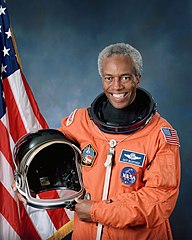Dawn DeWitt, Science Teacher, and SECME Coordinator and Department Instructional Leader at Palm Springs Middle School has been named the 2013 SECME National Teacher of the Year. Each year SECME, Inc. (formerly the Southeastern Consortium for Minorities in Engineering) recognizes outstanding K-12 educators who have demonstrated leadership ability in advancing student development and outcomes in the areas of science, technology, engineering, and mathematics.

Bruce Wear (SECME Coordinator SDPBC), Dawn DeWitt (SECME Teacher of the Year), Michele Williams (Executive Director, SECME National), Sandra Jinks (Principal, Palm Springs Middle School) Back row; Charles Tharp (Ms. DeWitt’s husband and engineering volunteer)
In honoring Ms. DeWitt, SECME noted,”The SECME National 2013 Teacher of the Year demonstrated exemplary accomplishments in building and sustaining a successful SECME school program through creative and enriching curricular and extracurricular activities, thereby increasing the number of historically under-represented students who are interested in, and academically prepared for, studies in science, technology, engineering, or mathematics (STEM).”
Bruce L. Wear, Palm Beach County District STEM/SECME Coordinator wrote in his nomination letter, “In her capacity as a SECME Coordinator, I have seen Ms. DeWitt work tirelessly with her own students spending countless hours after school and even on Saturdays leading them towards excellence. She constantly shares her knowledge and experience with others on a frequent basis. She runs several of our Saturday Mousetrap and Bridge/Truss Seminars for the benefit of other members of our SECME “family”. Dawn brings not only her enthusiasm but also her deep felt desire to raise all students problem solving abilities.”
Richard McCombs from Statesboro High School in Georgia was named SECME Co-Teacher of the Year with Ms. DeWitt. The 2013 SECME National Co-Teachers of the Year will be recognized on June 22 at an “Evening of Elegance” celebration sponsored by the ExxonMobil Foundation to be held during the 37th Annual SECME Summer Institute, hosted this year by Embry-Riddle Aeronautical University in Daytona Beach, Florida, from June 16-23, 2013
For more information please contact Bruce Wear at bruce.wear@palmbeachschools.org.


 NASA Kennedy Space Center hosted a college recruitment fair for high school sophomores, juniors and seniors showcasing STEM education opportunities available at top colleges and universities across the nation.
NASA Kennedy Space Center hosted a college recruitment fair for high school sophomores, juniors and seniors showcasing STEM education opportunities available at top colleges and universities across the nation. The Air Force and its industry partners launched WGS-5, the fifth Wideband Global Satellite Communications spacecraft, into orbit aboard a United Launch Alliance Delta IV booster fired from Cape Canaveral AFS, Florida, at 8:27 p.m. Eastern on May 24.
The Air Force and its industry partners launched WGS-5, the fifth Wideband Global Satellite Communications spacecraft, into orbit aboard a United Launch Alliance Delta IV booster fired from Cape Canaveral AFS, Florida, at 8:27 p.m. Eastern on May 24.

